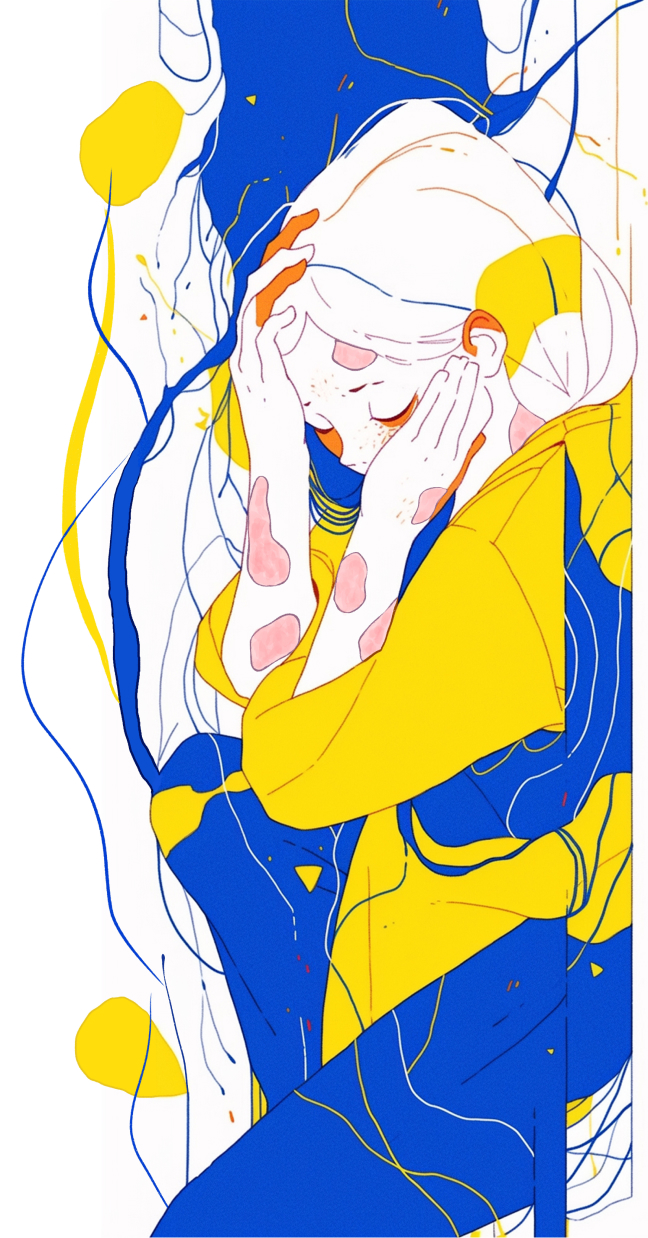
Context:
Skin diseases are among the most common health conditions, causing both physical and psychological issues.
However, conventional treatments often lack convenience, portability, or suitability for mild symptoms, leaving a market gap.
Solution:
This project integrates skin disease detection, tracking, and treatment.
It utilizes luminous bacteria for a more efficient and personalized therapeutic approach while enabling users to monitor their condition effectively.
Final output:
App design, wearable prototype, sensor system, developed app, and peripheral design

To gain a comprehensive understanding of skin diseases and their prevalence, I analyzed data on incidence rates, the trend, and demographic distributions. This analysis helps identify affected populations and the scale of the issue.



The data analysis underscores the widespread prevalence, high incidence rates, and increasing trend of skin diseases, revealing significant market potential.
I interviewed ten participants to gain deeper insights into the challenges and frustrations faced by individuals with skin diseases in their daily lives. Here are some of the most common concerns they shared.

The interview revealed that skin disease patients struggle with discomfort, emotional unconfidence, and treatment inconvenience.
Based on previous interviews, I discovered common challenges in their treatment experiences. I selected three typical cases and mapped their treatment cycles, which helped me identify shared key pain points.

It reveals that patients face recurring challenges in conventional treatments, including ineffectiveness, time-consuming hospital visits, and inconvenient medication routines, leading to frustration and delayed recovery.
Building on the insights from patient interviews and treatment cycle analysis, I explored more reasons why many patients delay or avoid hospital visits for skin disease. Understanding these barriers helps identify opportunities for more accessible and patient-friendly solutions.

Traditional beliefs, psychological barriers, logistical challenges, and unsuitability of mild symptoms are key factors preventing patients from seeking timely treatment, highlighting the need for more convenient, everyday-friendly, and stigma-free solutions.
Then I conducted an empathy map. This helped me explore their sensory experiences, feelings, social challenges, and needs, providing deeper insights into their daily difficulties and expectations for treatment.

What are we target users and what should we do?

1. Firstly, I analyzed existing treatments case-by-case to identify strengths and weaknesses, aiming to find design breakthroughs.

From this, I planned to design based on light therapy, while controlling its duration and ensuring it is effective yet gentle.
2. Next, I conducted deeper scientific research in light therapy.
It’s proved that light therapy is effective because of different lights’ wavelengths. Light of different colors has various effects.

3. Simultaneously, I researched luminous bacteria.
Luminous bacteria are microorganisms that have the unique ability to produce visible light. It is the result of an enzyme called luciferase acting on a light-emitting molecule called luciferin.

The condition under which Luminous bacteria emit light of different colors:

4. Finally, I came up with my design idea.

The design concept is to use luminous bacteria to emit light of different colors in order to design a luminous bacteria light therapy wearable “BioLight” and a stylish treatment covering “LumiCover” with an app.

For the app:




Color changes:
Skin disease symptons can exhibit various colors, including redness, blackheads, and whiteheads. Sensors capturing color changes can identify these different stages of the skin disease.

I used sensors, python programming, CAD, 3D printing, and other technologies to create the wearable device "BioLight." The diagram below shows the electronic wiring.

I developed and launched a real app, which differs from the previous app prototype. This is a remote control program that integrates Bluetooth and Wi-Fi to control the bacteria living environment. Here is the simplified coding logic diagram.







1. Homepage
2. Examining
3. Examination Records
4. Treating
5. Treatment Records
6. Shop
7. Me - Community Page
8. Me - Personalized Support

